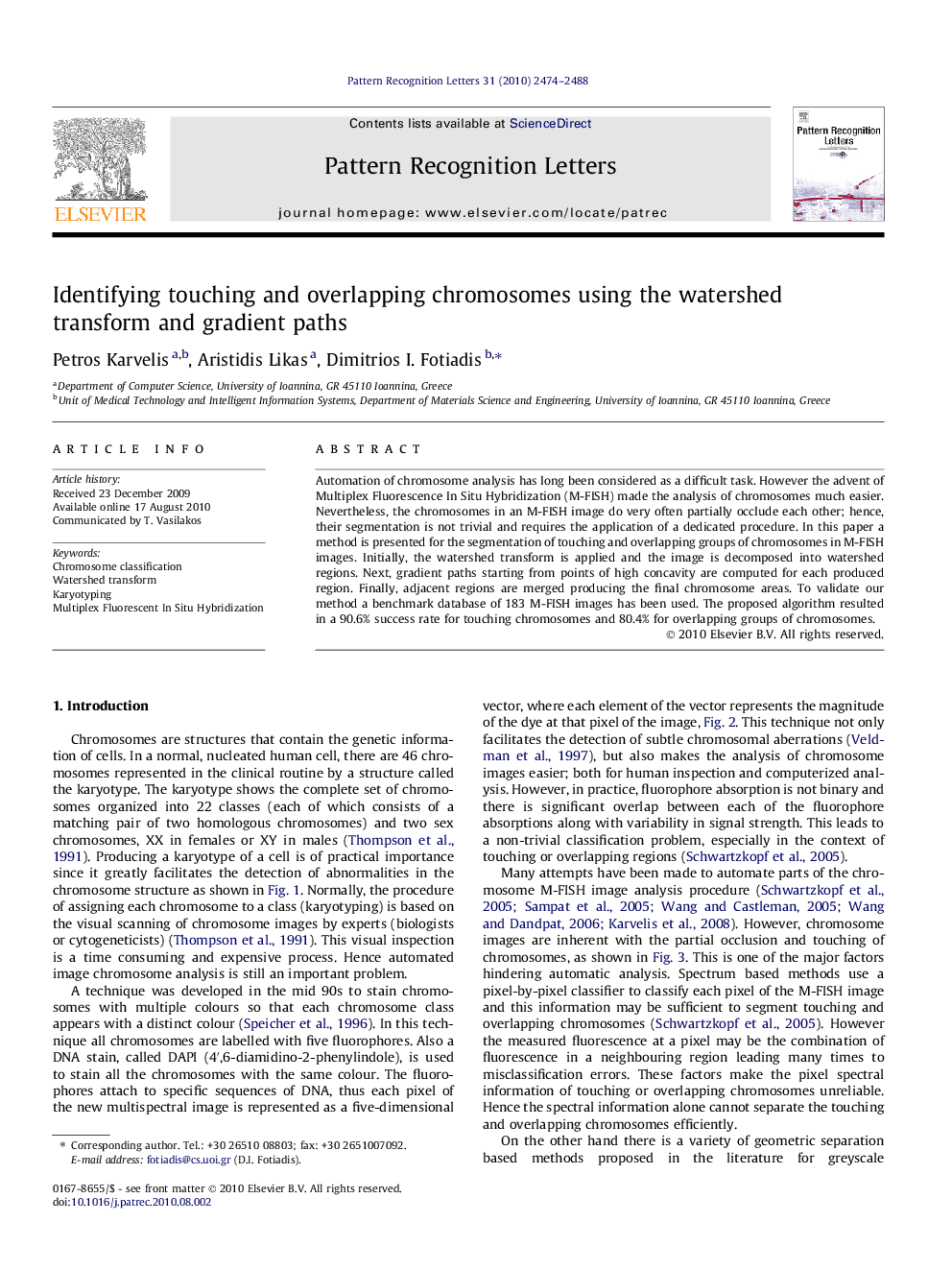| Article ID | Journal | Published Year | Pages | File Type |
|---|---|---|---|---|
| 534924 | Pattern Recognition Letters | 2010 | 15 Pages |
Automation of chromosome analysis has long been considered as a difficult task. However the advent of Multiplex Fluorescence In Situ Hybridization (M-FISH) made the analysis of chromosomes much easier. Nevertheless, the chromosomes in an M-FISH image do very often partially occlude each other; hence, their segmentation is not trivial and requires the application of a dedicated procedure. In this paper a method is presented for the segmentation of touching and overlapping groups of chromosomes in M-FISH images. Initially, the watershed transform is applied and the image is decomposed into watershed regions. Next, gradient paths starting from points of high concavity are computed for each produced region. Finally, adjacent regions are merged producing the final chromosome areas. To validate our method a benchmark database of 183 M-FISH images has been used. The proposed algorithm resulted in a 90.6% success rate for touching chromosomes and 80.4% for overlapping groups of chromosomes.
Research highlights► The watershed transform aids the separation of groups of chromosomes. ► Gradient paths are used for the first time to separate groups of chromosomes. ► Region merging and splitting technique is used to merge or separate chromosomes.
